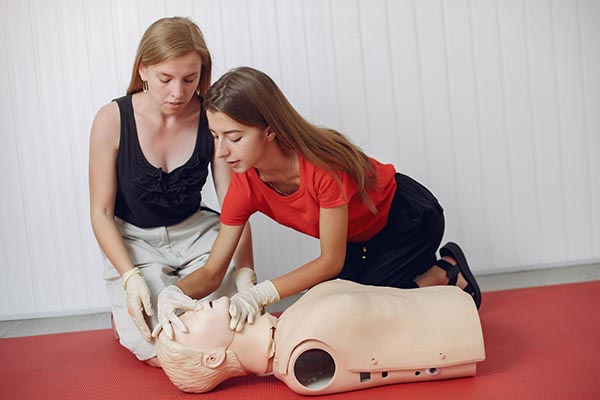
CPR, or cardiopulmonary resuscitation, might sound like a complex medical term, but it’s actually a simple, lifesaving skill anyone can learn, including kids. Imagine a friend suddenly choking or a family member collapsing; knowing CPR can make all the difference between life and death. If you’re a parent, teacher, or guardian wondering whether kids should learn CPR, the answer is a resounding yes. This blog breaks down what kids should know about CPR, why it’s important, and how CPR certification classes near you can empower your child to act confidently in emergencies.
You might think CPR is too advanced for children, but kids can grasp the basics and perform key steps effectively with proper training. Here’s why it’s so important:
CPR for kids focuses on easy-to-remember steps that anyone can perform, regardless of age. Here’s a kid-friendly breakdown:
Training courses designed for kids break these steps down into easy chunks, making them approachable and memorable.
While knowing the basics is great, enrolling in a CPR certification class tailored for kids boosts their skills, understanding, and confidence. Here’s how:
Searching for “CPR classes near me” is an excellent step toward equipping your child with essential skills. Local community centers, schools, hospitals, and organizations like the American Heart Association often offer CPR courses specifically for children or youth.
When choosing a class, look for:
Many stories highlight kids stepping up in emergencies thanks to CPR training. For example, a 12-year-old performed chest compressions on a choking sibling and kept them alive until paramedics arrived. These real-life examples prove CPR isn’t just an adult skill, kids can be heroes too.
CPR knowledge isn’t just for doctors or adults, kids can learn and confidently perform this vital skill. Teaching children CPR prepares them to be early responders, helping friends, family, and strangers when it matters most. If you want your child to gain life-saving confidence and skills, find CPR certification classes near you and get them started today. A few hours of training can empower a lifetime of readiness.
Ready to empower your child with life-saving skills? Contact CPR Classes Near Me today to find kid-friendly CPR certification courses in your area. Give your child the confidence to act when it counts the most!
Our primary goal is to ensure that you receive a top-quality CPR/First Aid certification. With our in-person training in Austin, you can learn CPR and BLS in just one class. Your presence is all that’s needed to continue with your lesson! During your session, you will complete all the live-training components necessary to ensure you receive your AHA Healthcare Provider certification card.
Our CPR Classes in Austin are discounted to $59.95 (saving you $20), and our CPR + First Aid Class is offered at $79.95 (also saving you $20). When looking for CPR Classes, ensure to check for the American Heart Association seal. Other sites might seem cheaper but frequently lack the official training credentials demanded by employers.
Upon successful completion of the course, you will obtain a CPR certification that is valid for two years. The AHA CPR certification is recognized with the highest acceptance rate among employers nationwide.
Indeed! Enroll in any CPR Certification Austin BLS course to extend your certification for an additional two years. The in-person BLS course and the Renewal Class are identical.
Anyone capable of completing the course independently should consider pursuing CPR training and CPR Certification. There is no minimum age restriction for obtaining a CPR certification in Austin through the American Heart Association (AHA)..
CPR training needs to be carried out in person to guarantee its effectiveness. Our experienced instructors offer an engaging and dynamic learning experience. Typically, employers do not recognize CPR certifications that are obtained solely through online courses.
All authorized American Heart Association training centers are obligated to display the entire video. After a three-hour session with CPR Classes Near Me Austin, your BLS CPR eCard will be promptly issued by the instructor on the same day!